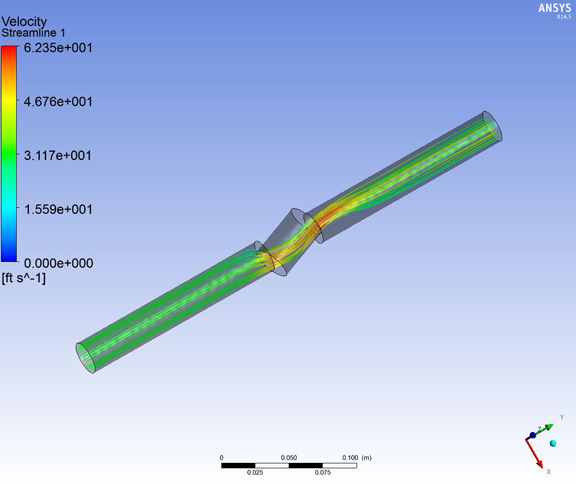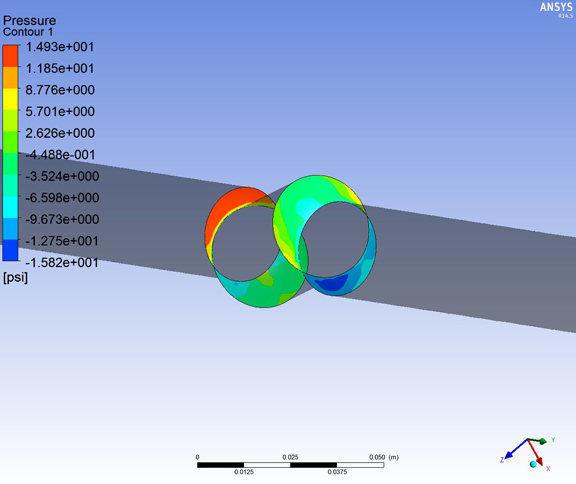Latest News
April 15, 2013
Setting up simulation jobs that accurately reproduce real-world phenomenons—how an engine heats up during operation or how fluid flows inside a catheter—takes skill and experience. So is interpreting the FEA (finite element analysis) results. The second phase is crucial in making intelligent deductions about how to improve the design.
About a month ago, with ANSYS’ help, I put together a video covering the basic setup of a CFD job. For simplicity, ANSYS’ senior product manager Gilles Eggenspieler and I decided to focus on a very straightforward scenario: the water pressure inside a valve during close and open operations. The valve is installed at an angle, making it difficult to foresee the water’s behavior or pressure.
In the follow-up video posted here, Gilles help me make sense of the outcome. One of the important safety checks, he pointed out, is to make sure the job ran as it should. But that can be tricky for newcomers too, because simulation software programs are, to put it bluntly, automatic number crunchers at their core. So if you provide them a parameter, they’ll most likely give you back some kind of answer, even if the input parameter doesn’t make sense (for example, running the scenario above with a valve angle that’s unrealistic for real-world installation).
There are clues you can find to confirm your job ran smoothly. “You can look at the convergence plot. You can also look at the monitors, to look at the maximum velocities to make sure it’s stable,” he said. Many simulation programs offer tabs and interfaces that let you look at the changing velocities and pressures during computation in easily digestible graphs. The lack of unusual spikes—a sign of convergence—in the output indicates the job’s reliability.
The visual playback itself can also confirm the simulation results’ validity. Gilles pointed out, “Use your engineering judgement to make sure what you’re actually looking at is what will physically occur in the system.” For initial verification, the natural flow of water inside the valve is a good indicator that the job was properly conducted.
Later, Gilles demonstrated how to create a velocity plane to review the velocity distribution in 2D. This shows you some of the high-stress regions that are most vulnerable. He also showed how to obtain pressure distribution to extract the numeric value (in PSI for this job) to see whether it passes your established safety standards and margins.
The exercise Gilles ran didn’t produce excessive pressure on the valve’s wall. The next step, Gilles explained, would be to run the same job at slightly different angles to identify the best possible configuration for the valve. For such batch simulation, ANSYS offers an easy interface to specify a range and ran all variations in a single job.
For more, watch the video clip below:
Subscribe to our FREE magazine, FREE email newsletters or both!
Latest News
About the Author
Kenneth Wong is Digital Engineering’s resident blogger and senior editor. Email him at [email protected] or share your thoughts on this article at digitaleng.news/facebook.
Follow DE







